DEPARTMENT OF SURGERY
OUR HISTORY
On November 5, 1804, Emperor Alexander I gave the highest orders to establish a university in Kazan. According to the Charter of 1804, 6 departments were organized within the Faculty of Medicine or Medical Sciences, including surgery.
The Department of Medical Sciences (Faculty of Medicine) of Kazan University was opened on May 2 (May 15), 1814, 10 years after the formation of the University.
In the same 1814, on the initiative of the first professor-therapist F.H. Erdman, a decision was made to organize an IKU clinic to train medical students directly at the patient's bedside, which was to consist of three departments: therapeutic, surgical, and midwifery.
The clinic was located on Voskresenskaya Street opposite the University (now the corner of Kremlevskaya and Universitetskaya streets) in a manege building built and reconstructed according to the design of the provincial architect Shelkovnikov, where the printing house and apartments for University employees were located.
The clinic occupied 1/3 of the mezzanine area of this building; during the period of its organization, it housed 4 beds, later – 8, and only in 1819 – 10 beds.
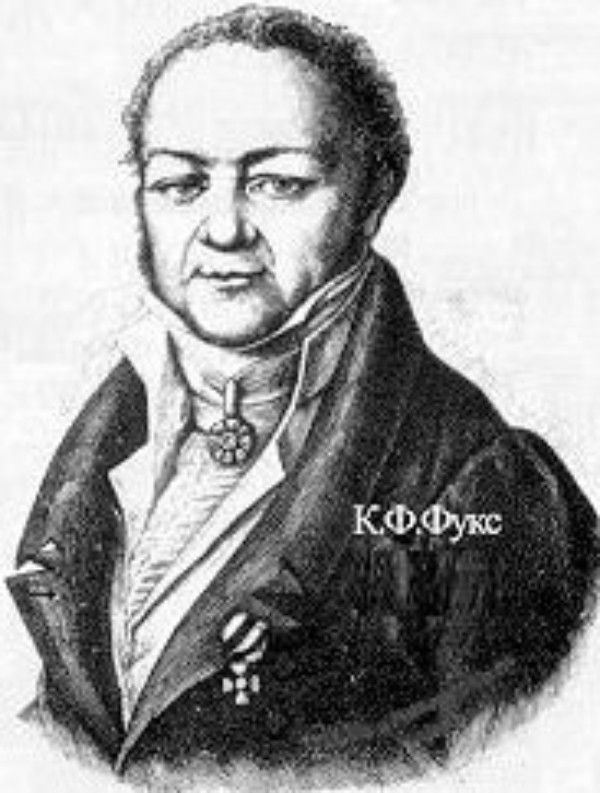
During the work of F.H. Erdmann's successor in the department of therapy, Professor K.F. Fuchs (1818 - 1833), an additional 5 rooms were allocated at the university clinic, where 17 beds were placed. He was also the first to introduce the teaching of clinical disciplines with the analysis of patients on an outpatient basis.
In connection with Professor R.I. Vogel's course in surgery, 1 room was allocated for the hospitalization of surgical patients, where 7 beds were placed.
VOGEL LUDWIG (LEV) LAVRENTIEVICH
(01/06/1771, Arnstadt, Principality of Sparzburg-Sonder-Gausen, Germany – 09/03/1840, Germany), head. department of medical substance science, pharmacy and medical literature (1822-1837), surgery (1822-1828).
On April 24, 1794, he received the degree of Doctor of Medicine and Surgery at the University of Jena. In 1816 we saw him as the chief physician at the military camp of Russian troops near the city of Gotha. On June 15, 1821, he was recognized by the St. Petersburg Medical-Surgical Academy with the degree of Doctor of Medicine.
On August 11, 1822, thanks to the obvious patronage of his trustee Magnitsky, he was appointed, in addition to the council, as an ordinary professor of the KU in the department of medical substance science, pharmacy and medical literature; arrived in Kazan on September 29.
On December 30, 1822, he was entrusted with a temporary teaching of surgery (he taught it in 1822-1828).
Confirmed on July 8 (elected on June 13), 1823, as dean of the department of medical sciences, remained in this position until July 1825; was again dean from June 15, 1834 to June 1835. In 1830, on behalf of the trustee, he researches, together with prof. Lentovsky, water from Sergievsky mineral springs.
Dismissed on August 1, 1837, upon the implementation of the university charter of 1835.
After a visit to the Kazan University clinic in 1827 by the trustee of the educational district, M. N. Musin-Pushkin, measures were taken to expand it: the entire building was transferred to the clinic, which was rebuilt during 1828 taking into account its new purpose.
The clinic had 36 beds, of which 16 were in the therapeutic department, 14 in the surgical department, and 6 in the obstetric department. In addition, an auditorium, utility, residential and utility rooms were located in the same building. In 1829, a pharmacy was organized in the clinic - the first in the Kazan province.
On May 8, 1838, work began on the construction of a new clinic building for the medical faculty of Kazan University on the site of the printing house. During construction work, patients were removed from the building and hospitalized in private homes.

On September 1, 1840, the opening of the clinic of the medical faculty of Kazan University took place.
On the ground floor there was a pharmacy, 3 rooms of the obstetric institute with 14 beds, of which 8 were paid, 6 free, a laboratory, utility and living quarters.
On the second floor there is an auditorium, as well as a therapeutic clinic: to the right is the male therapeutic department, to the left is the female one, with a total of 22 beds, of which l5 are paid for 6 silver rubles, 7 are free,
On the third floor there is an auditorium, an operating room with demonstration places for students, a surgical clinic with 24 beds, of which 16 beds are paid for 6 silver rubles, 8 are free.
The hospital was designed for 100 patients, but only 60 people were hospitalized; in addition to this number, it was allowed to hospitalize with additional payment (9 rubles per month) no more than 2 people in the surgical department and no more than 4 people in other departments.

In 1834, Franz Osipovich Jelacic was elected to the department of surgery.
F.O. Jelacic energetically began to improve the clinic and participated in the development of the design of its new building.
In 1837, the charter came into force: the medical department became known as the Faculty of Medical Sciences, and a 5-year course was established. Lectures on general surgery were held twice a week.
Clinical instructions have been introduced that correspond to modern clinical rounds and control over the supervision of patients in the 4th and 5th courses.
Time-consuming, petty supervision of students was eliminated; Rehearsals after lectures, monthly tests, entrance exams for high school graduates, transition exams for students were canceled, the academic year was divided into two halves. Students who did not pass the transition course exams had to study at their own expense.

In 1837, Pyotr Aleksandrovich Dubovitsky was appointed to the department of general and private surgery.
He was entrusted with the task of promoting the then new method of stone crushing according to Hertel. Dubovitsky performed complex rhinoplasty and stone crushing operations. In 1836, 200,000 rubles were allocated for the construction of clinic buildings, which were then called “old”. The building was open to receive patients.
Having received the degree of Doctor of Medicine and Surgery from the Academy in 1837, on August 1 of the same year he was appointed extraordinary professor of general and private surgery at Kazan University. In March 1838, he was elected as an ordinary professor in the department he occupied. In the 1837-38 academic year, temporarily, in the absence of a professor, he taught operative surgery. In 1839-40 he was on a trip abroad for scientific purposes.
Being a rich man, P. A. donated all his salary to improve the medical educational and auxiliary institutions of the university; Thus, Professor Dubovitsky was credited with establishing a special clinical library at his own expense.
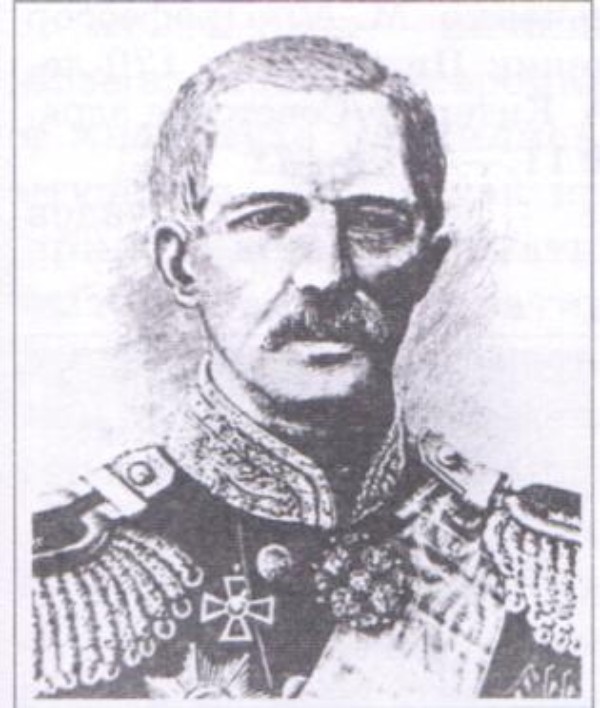
Instead of the departed Dubovitsky, Alexander Aleksandrovich Keeter was elected to the Department of Theoretical Surgery.
A.A. Keeter in 1844 together with F.O. Jelačić successfully performed vaginal amputation of a uterus affected by cancer.
Prof. F.O. Jelacic and A.L. Keeter in 1847 under ether anesthesia (23) performed the first operations. The operation was especially successful in a 3-year-old child.
According to Jelačić: “The child lay quietly, like a deep sleeper, for 1 minute and 40 seconds there was no resistance. 3 stones were removed, the prolapsed intestine was set. He was unconscious for another 50 seconds.”
Prof. A.L. Keeter (1840-1848) - student of Prof. N.I. Pirogov, created a surgical room in which there was a collection of urinary stones, affected kidneys, and a macroscopic specimen of the implantation of one intestine into another (intussusception) in a child.
In 1860, the Department of Hospital Surgery of the Medical Faculty of the Kazan Imperial University was opened with 14 beds, modeled on two similar departments in Dorpat and Moscow on the basis of the “hospital of the order of public charity,” which was later transformed into the provincial zemstvo hospital. There was no emergency room or operating room. There was no antiseptic at that time.
In 1848, Keeter was replaced by Andrei Nikolaevich Beketov. He read inflammatory diseases, injuries, hernias, ulcers and fistulas, benign tumors, cancer, vascular diseases, deformities.

Andrey Nikolaevich Beketov is a graduate of Moscow University. A.N. Beketov worked first as a resident, then as an assistant in Moscow clinics.
In 1848 he defended his dissertation “Inguinal Hernias”.
In 1860 he was appointed director of the hospital surgical clinic of Kazan University.
Razumovsky V.I. in his memoirs he writes that Beketov did little surgery and was good at lateral stone cutting. He operated more for cataracts, and was ironic about antiseptics, calling the spray a “shugalka.” During the period of managing the hospital clinic, he published only “Report on the state of the hospital surgical clinic” (1867). Adamyuk E.V., who later became world famous as a professor-ophthalmologist at Kazan University, and Vladimirov V.D., who later became a professor in the department of operative surgery, worked as residents at his clinic.

The second head of the department and clinic of hospital surgery was Professor M.V. Nikolsky.
He graduated from Kazan University in 1851 and in 1870, at the age of 47, was moved from the department of eye diseases, which he headed, to the department of hospital surgery, where he worked until the last years of his life.
Professor M.V. Nikolsky showed greater interest in urological problems. The topic of his dissertation is “On the fragmentation of urinary stones.”
M.V. Nikolsky, like A.N. Beketov, was skeptical about the Lister method that had begun to be introduced into practice, which narrowed the scope of surgical interventions, and the clinic did not have an operating room at that time, and therefore the number of purulent-septic complications was extremely large.
According to Prof. IN AND. Razumovsky, Prof. M.V. Nikolsky was a good lecturer and a good operator.
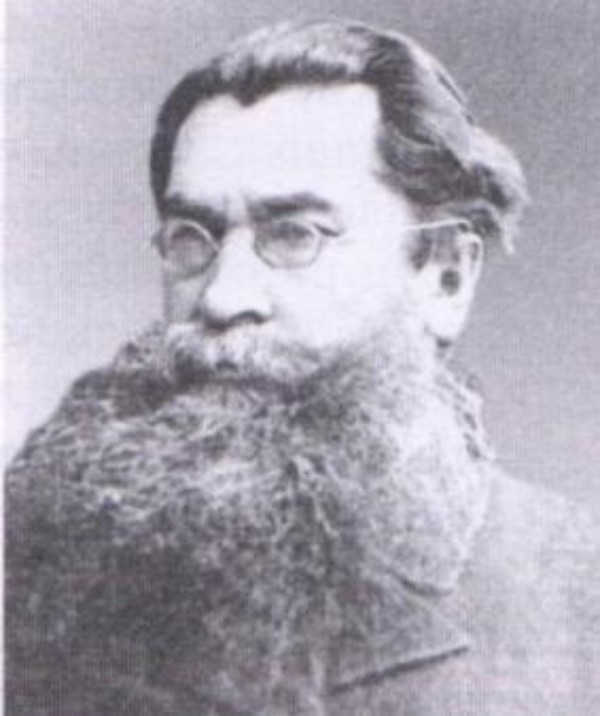
Lev Lvovich Levshin (02/27/1842 - 09/23/1911), head of the department of theoretical surgery (1874-1881), hospital surgery (1881-1886), faculty surgery (1887-1893).
In 1866 L.L. Levshin graduated with a gold medal from the St. Petersburg Medical-Surgical Academy.
In 1870, he defended his doctoral dissertation at the Medical-Surgical Academy on the topic “Anatomical and histological studies of the lymphatic and circulatory systems in the gastrointestinal canal of the spotted salamander.”
In 1874, being a junior doctor of the Pavlovsk regiment, Doctor of Medicine L.L. Levshin was elected by the Council of Kazan University as an extraordinary professor at the department of surgical pathology.
L.L. Levshin takes an active part in the Russian-Turkish war of 1877-1878. as a consultant surgeon, working under the leadership of N.I. Pirogov.
In his work “Military medicine and private assistance at the theater of war in Bulgaria and in the rear of the active army,” N.I. Pirogov wrote: “... of the professor-surgeons who distinguished themselves by their activities during this war for the common benefit, Professor Levshin must be recognized and associate professor at Studensky (both Kazan University), who worked from the very beginning of the war.”
Since 1879, he has headed the Department of Hospital Surgery at Kazan University and is a consultant surgeon at the Kazan Military Hospital.
He organized an emergency department, an operating room, a dressing room, and introduced antiseptics, promoted by D. Lister. The number of purulent complications decreased sharply.
L.L. Levshin performed the first operations on the abdominal organs. He was one of the first in Russia to perform a series of transsections for echinococcus, ectopic pregnancy, and several operations to remove tumors of the abdominal cavity and pelvis.
A staunch supporter of conservative treatment methods, especially in cases where the question of amputation was raised.
“Amputation is a reproach to medicine. Medicine should not take away, but preserve organs. I believe that in the triumphant march of surgery there will come a time when doctors will be able to do without this operation.”
Being a military surgeon by training, L.L. Levshin paid constant attention to issues of military field surgery.
He develops the ideas of N.I. Pirogov in the field of immobilization of limbs with gunshot fractures. Giving all the advantages to N.I. Pirogov's plaster cast, he offers a series of splints made from the most affordable materials for use in field conditions. These tires include twig wicker, straw carpets, strips of tinned tin, and various wooden tires. Levshin manufactured and offered to supply the army with 8 types of collapsible and folding transport tires, and made valuable suggestions on the issues of providing assistance to soldiers injured on the battlefield.
Levshin pays great attention to the timely medical assistance of the orderly. Based on practical experience, he points out that about half of the wounded on the battlefield die due to bleeding, and therefore, he considered it mandatory to train orderlies in the rules of stopping bleeding.
He attached primary importance to asepsis and antiseptics in surgery.
The absence at that time of autoclaves for sterilizing dressings led L.L. Levshin to the invention of a “new samovar-decontaminant.”
The device is designed to dehydrate dressings immediately before surgery. Sterilization in this samovar was carried out with flowing steam.
He developed methods for disinfecting surgeon's hands and surgical instruments.
L.L. Levshin summarized his work on decontamination in a remarkable work entitled “On the use of various methods and means for disinfection in surgery.”
L.L. Levshin was an outstanding lecturer. According to his student, Prof. V.I. Razumovsky, L.L. Levshin's lectures were eagerly attended not only by students, but also by doctors, the audience was always crowded, and the lectures often ended with warm applause. L.L. Levshin had great erudition in the field of not only clinical and military field surgery, but also pathological anatomy, which allowed him to describe in detail not only the clinical, but also the pathological picture of a particular disease in his lectures. He strongly recommended that all young doctors who graduated from the university go to work in the zemstvo. L.L. Levshin argued that persons who received an education at public expense are obliged to work among those segments of the population that are most in need of medical care. While teaching students theoretical issues of surgery, he constantly involved them in direct participation in operations, and instructed students to perform simple operations under his personal supervision.
In 1893, L.L. Levshin moved to Moscow and headed the department of hospital surgery at Moscow University.
L.L. Levshin paid much attention to malignant neoplasms and the fight against them.
In 1898 on the initiative and with the personal participation of L.L. Levshin, the first special institute in Russia for the treatment of cancer was organized in Moscow, the director of which he remained until the end of his life (now the Federal State Institution Moscow Research Oncological Institute named after P.A. Herzen).
In fact, L.L. Levshin can be called the first oncologist of our country.
In surgical clinics under the leadership of L.L. Levshin, prominent Russian surgeons were trained - professors N.A. Gerken, V.I. Razumovsky, S.E. Berezovsky, P.D. Solovyov, A.G. Rusanov, S.I. .Spasokukotsky.
L.L. Levshin wrote and left behind more than 40 scientific works, 34 of which date back to the Kazan period of his activity.
In Kazan, he wrote a guide for students, “Fundamentals of Surgery” (1880), which was then republished in 1885 and 1896, “A Guide to Private and Emergency Surgery,” and many remarkable works on issues of military field surgery. A number of major translated works were published under his editorship.
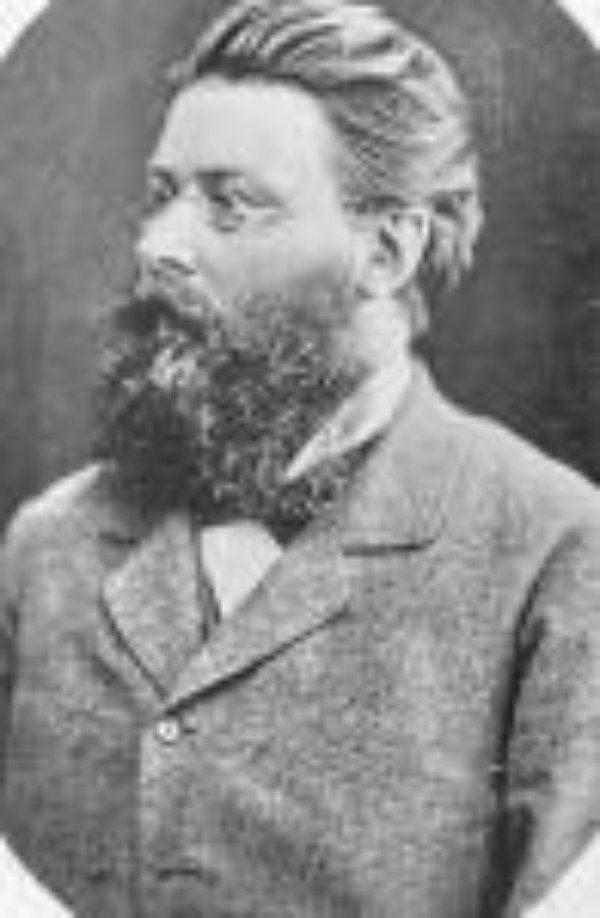
After the transition Prof. L.L. Levshina in 1887 Professor N.I. Studensky was appointed to the Department of Faculty Surgery of Kazan University as the head of the hospital surgical clinic.
By this time prof. Studensky N.I. had a doctorate in medical sciences. Dissertation on the topic “On the doctrine of the formation of urinary stones”,
He was a participant in the Serbian-Turkish war (1874) and the Russian-Turkish war (1877-78), where, together with prof. Levshin L.L. worked under the leadership of N.I. Pirogov.
N.I. Studensky was the author of about 20 scientific published works, of which 3 textbooks: “Course of Operative Surgery”, “Guide to Surgery for Paramedics and Paramedic Students”, which went through 6 editions over the course of 20 years.
In 1885, in St. Petersburg, a “Course of Orthopedics, taught to third-year students of the Imperial Kazan University by Associate Professor N.I.” was published. Studensky" is the first Russian educational manual on orthopedics.
He expanded the range of surgical interventions and began to widely perform a planned operation - hernia repair, whereas before him herniotomy was rarely used, and even then, only in cases of strangulated hernias.
In the 90s of the century before last N.I. Studensky and V.M. Bekhterev in Kazan performed brain surgery for the first time.
He was the first in Kazan to introduce local anesthesia using cocaine “kenedol”.
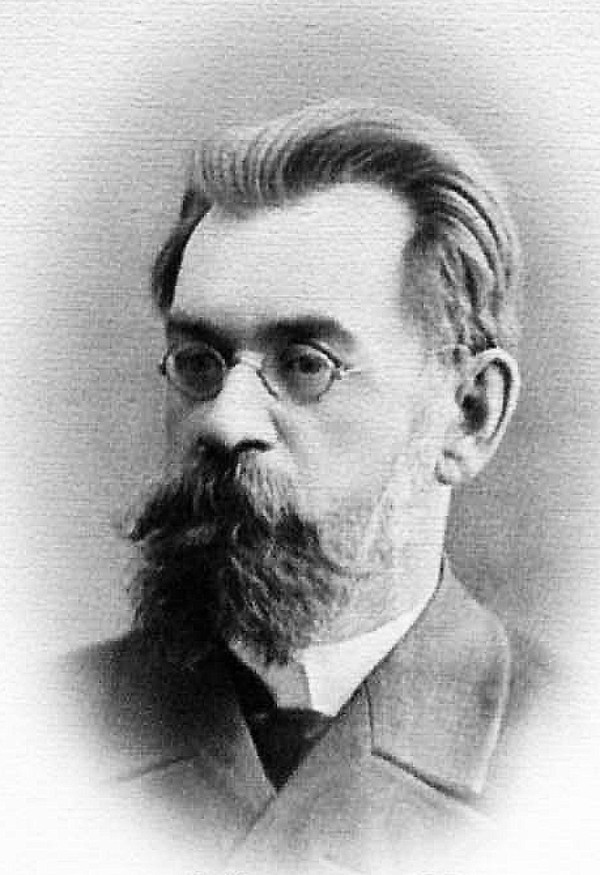
Vasily Ivanovich Razumovsky (1857-1935)
After graduating from the university V.I. Razumovsky is completing his residency at the hospital surgical clinic, headed by Professor L.L. Levshin.
In one of the Kazan hospitals, Razumovsky learns how to perform operations from Professor N.I. Studensky.
In 1884, at the age of 27, he successfully defended his doctoral dissertation on the topic “On the issue of atrophic processes in bones after nerve transection.”
IN AND. Razumovsky was one of the first in Russia to systematically develop problems of practical neurosurgery.
Razumovsky performed a lot of operations on the abdominal organs, the thyroid gland, and was the first in Kazan to perform an appendectomy.
Expanded indications for laparotomy. Developed removable sutures for operations for hernias and liver echinococcus.
The first interventions he performed on the organs of the chest cavity were considered impossible in those years.
Founder of the Kazan surgical school.
He has written about 200 scientific papers devoted to various issues of surgery. V.I. Razumovsky managed to attract a fruitful team of scientists to his research. From among his assistants, 16 professors emerged who began to independently head surgical departments in Russian institutes.
In 1905 V.I. Razumovsky became the first elected dean of the medical faculty of Kazan University.
Thanks to the persistence of V.I. Razumovsky in 1905, the first women were admitted to the medical faculty of Kazan University.
In the summer of 1908 V.I. Razumovsky visits leading surgical clinics in Germany and Austria. On this trip, Minister of Public Education A.N. Schwartz suggested V.I. Razumovsky to take on the duties of rector of Saratov University. As the rector of the newly created Nikolaev University in Saratov, Professor Razumovsky showed himself to be an excellent organizer and did a lot to turn the new university into a true center of education and science.
Razumovsky also participated in the creation of the Tiflis Institute of Traumatology and University, then helped organize another university in Baku, and finally, at Saratov University he headed the department of general surgery.
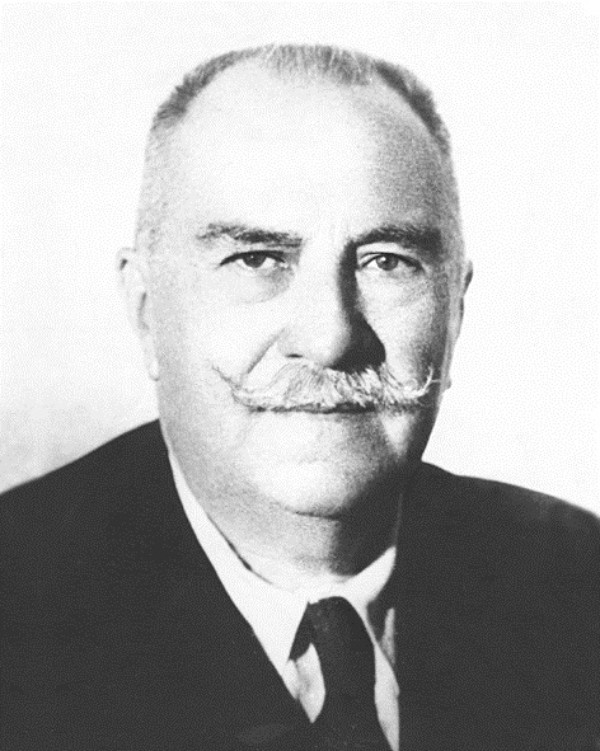
Alexander Vasilievich Vishnevsky (1874–1948)
Graduate of Kazan University.
He headed the department since 1914. to 1926
In the fall of 1903, at one of the meetings, the medical faculty of Kazan University considered the application of A.V. Vishnevsky with a request to allow the defense of the dissertation he had prepared on the topic “On the issue of peripheral innervation of the rectum.” The defense took place on November 2, 1903.
Various and complex operations such as rectal extirpation, intestinal plastic surgery of the esophagus, amputation of the mammary gland due to cancer, interventions on the chest and lungs. Moreover, hospital mortality was 2.6%, and postoperative mortality - 2.9%. This success was achieved when surgical interventions were performed under local anesthesia. Anesthesia was used in only 6 out of 360 cases.
Since 1923 By 1934, he published about 40 scientific papers, including the classic monograph “Local anesthesia using the creeping infiltration method.”
During this period, issues of bile duct surgery occupied a significant place in the scientific work of A. V. Vishnevsky. The scientist developed and implemented a new method of drainage of the common bile duct, which entered surgery as drainage according to Vishnevsky.
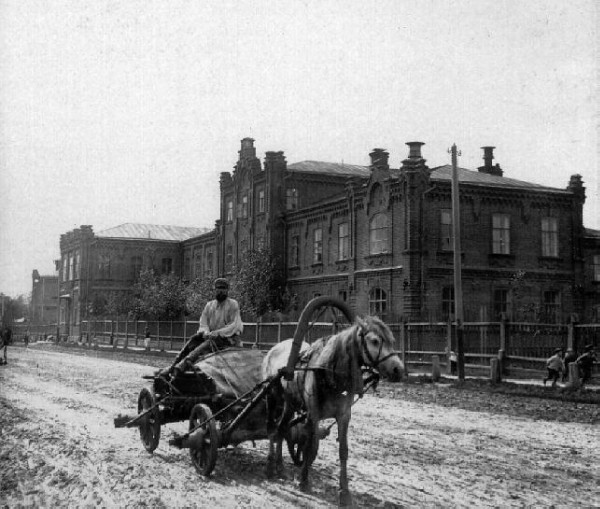
The second fundamental monograph, “Novocaine blockade and oil-balsamic antiseptics as a special type of pathogenetic therapy,” is devoted to the doctrine of nervous trophism and its practical application.
At the end of 1934 A.V. Vishnevsky moved to Moscow.
18 professors came from the school of A.V. Vishnevsky. Moreover, during the period of work in Kazan, among the employees of the clinics he managed, the following received the title of professor: S.M. Alekseev, I.V. Domrachev, N.V. Sokolov, E.A. Flerov.

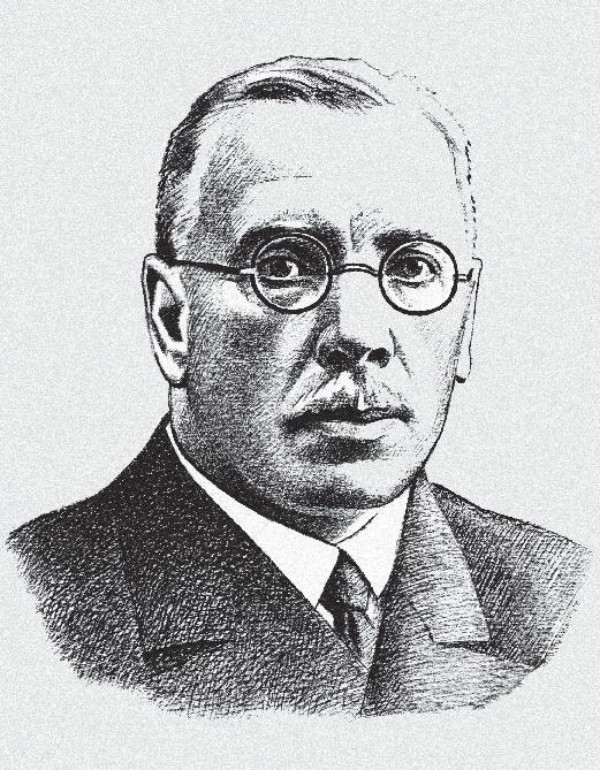
BOGOLYUBOV Viktor Leonidovich (1874–1935), head of Department of Topographic Anatomy and Operative Surgery (1913-1918), General Surgery (1917-1927), Hospital Surgery (1927-1935).
After graduating with honors in 1898 from the Faculty of Medicine of Kazan University, he was left as a resident at the surgical clinic, where he began to work under the guidance of prof. V. I. Razumovsky.
In 1904 he defended his dissertation for the degree of Doctor of Medicine on the topic “Resection of the epididymis in tuberculosis and anastomosis surgery on the seminal tract.”
Having gone on a scientific trip to study urology abroad, V.L. Bogolyubov, upon his return, was elected as a private assistant professor in the course of surgical diseases of the genitourinary system.
V.L. Bogolyubov is one of the organizers of the Kazan Institute for Advanced Medical Studies.
in 1923 he became director of the surgical clinic.
V.L. Bogolyubov published more than 100 scientific works of an experimental and clinical nature, including 6 monographs.
V. L. Bogolyubov introduced a lot of new things into plastic surgery: he used free fat transfer to replace brain defects, proposed methods of orchidopexy, restoration of the abdominal wall when the rectus abdominis muscles diverged using submersible sutures. Instead of wire, he used a flap of skin folded into a tourniquet during Thiersch's operation (for rectal prolapse); proposed free bone grafting in amputations to close the stump; plastic surgery of the inguinal canal with a skin flap; They also proposed methods of gastropexy and nephropexy.
In 1930, the Faculty of Medicine, by decree of the Council of People's Commissars of the RSFSR dated November 5, 1930 No. 132, was transformed into the Kazan State Medical Institute.
MODERN HISTORY
On September 1, 2017, the Department of Surgery was re-established; all surgical disciplines from the Department of Fundamental Fundamentals of Clinical Medicine came under the jurisdiction of the department. The department was headed by Doctor of Medical Sciences. Zinchenko Sergey Viktorovich, a graduate of the Kazan school of oncologists,highest category oncologist surgeon, specialist in the field of head and neck tumors.
In 2019 The department was renamed the Department of Surgery, Obstetrics and Gynecology. Based on the election by the Academic Council of KFU, S.V. Zinchenko was approved as the head of the Department of Surgery, Obstetrics and Gynecology at the Institute of Physics and Medicine.
From September 1, 2023 after the reorganization of the department of surgery, obstetrics and gynecology and the separation of separate departments: otorhinolaryngology and ophthalmology, obstetrics and gynecology, the department of surgery returned to its original name, retaining the teaching of the following disciplines:
- General surgery (for General Medicine and Dentistry),
- Surgical diseases, urology (for Dentistry and non-medical specialties),
-Hospital surgery (traumatology and orthopedics, neurosurgery, pediatric surgery, oncology and surgery),
- Anesthesiology and resuscitation.
The Department of Surgery also implements residency programs in oncology and endovascular diagnostics and treatment.